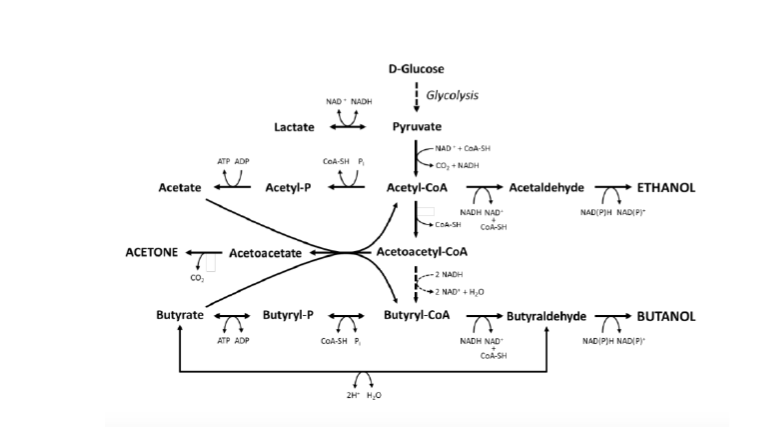Clostridium beijerinckii is able to produce Acetone, Butanol and Ethanol in the so-called ABE
fermentation (see figure below). In a first stage Acetate and Butyrate are produced and in a second
stage those are used to produce the final products.
fermentation (see figure below). In a first stage Acetate and Butyrate are produced and in a second
stage those are used to produce the final products.

a) Design a graph for a simplified model representing the first stage of the process and consider all
reactions irreversible. How many nodes and edges are represented?
b) Write the symbolic equation for the variation of Acetyl-CoA over time.
c) Assuming an initial glucose concentration of 10 units represent in a chart the tendency of
glucose, acetate and butyrate concentrations over time assuming that the rate of acetate production
is 3 times higher than the rate of butyrate production (note that for each glucose, 2 pyruvate are
formed).
d) Design a graph for a simplified model representing the second stage of the process and consider
all reactions irreversible. Assuming a first stage as described in c), how many units of Acetone,
Butanol and Ethanol could be formed?
reactions irreversible. How many nodes and edges are represented?
b) Write the symbolic equation for the variation of Acetyl-CoA over time.
c) Assuming an initial glucose concentration of 10 units represent in a chart the tendency of
glucose, acetate and butyrate concentrations over time assuming that the rate of acetate production
is 3 times higher than the rate of butyrate production (note that for each glucose, 2 pyruvate are
formed).
d) Design a graph for a simplified model representing the second stage of the process and consider
all reactions irreversible. Assuming a first stage as described in c), how many units of Acetone,
Butanol and Ethanol could be formed?
